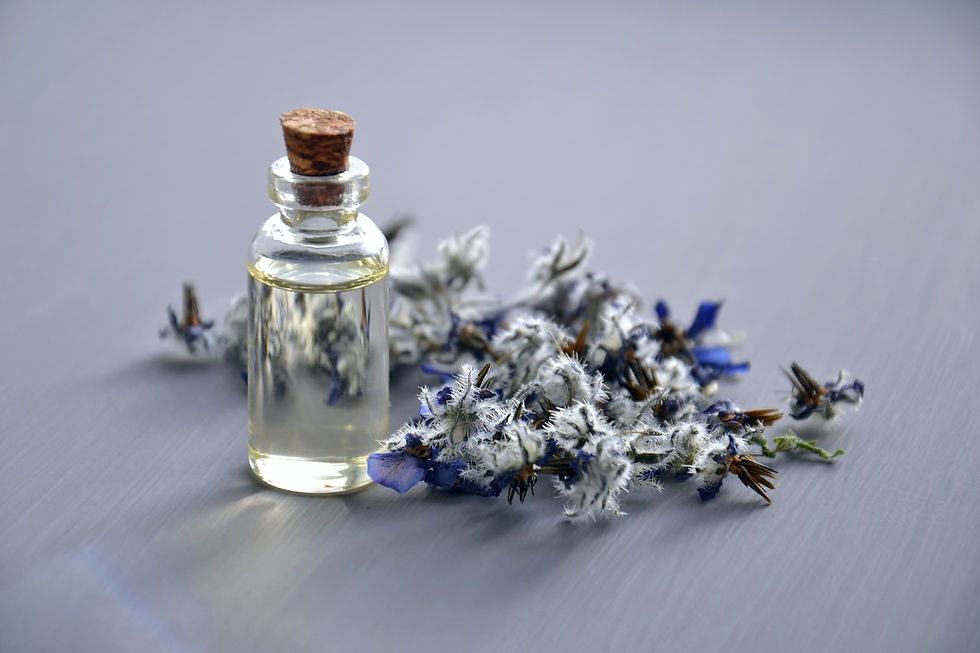Learn About Aromatherapy and How It Can Help You
- Debora Bartalotta
- Oct 14, 2021
- 3 min read
When we think of aromatherapy, our mind immediately goes to diffusing essential oils at home or massages. But it is a lot more than that. In recent years, aromatherapy has gained considerable attention in the science and medicine field and studies have been conducted on its potential benefits.
So, What is Aromatherapy?

Aromatherapy is a holistic treatment that uses essential oils to promote general wellbeing. Essential oils are natural plant extracts, made by steaming or pressing the flowers, barks, leaves, or fruits of the plant that produce fragrance. This is why they were also used as perfumes for their soothing scents in the ancient days. These oils can be absorbed by our skin, so massage therapists may add a few drops of essential oils to alleviate certain symptoms.
Aromatherapy has been around for centuries with its origins tracing back to Asia, Egypt, and parts of the Mediterranean area. The science behind it explains that when the scent molecules are inhaled, they travel from the olfactory nerves directly to the amygdala, the emotional centre of our brain. One of the research studies at Johns Hopkins found that certain essential oils could kill a type of Lyme bacteria better than antibiotics.
The Benefits & Uses of Aromatherapy
The science behind aromatherapy is still developing, and most of the research behind its benefits is limited. However, it is believed to:
Manage pain and soothe sore joint
Reduce stress, feelings of anxiety and irritation
Aid sleep and improve sleep quality
Treat headaches and migraines
Ease discomforts of labour
Fight bacteria, viruses, or fungus
Boost immunity, and many more.
How To Safely Use Essential Oils
Since essential oils are a major part of aromatherapy, it is important to know how to use them properly.

The quality of essential oils can vary, depending on where you’re purchasing them from. There are no regulations on essential oils, therefore, the label may not list the right quantities of the ingredients or the entire list of ingredients on the bottle. This is why essential oils should not be ingested. It is also important to double-check if you are allergic to any essential oils before using them. Children, too, cannot be exposed to certain types of essential oils.
One way to use them safely is to use them as body oils. You can mix a base oil, such as coconut oil or olive oil, and a few drops of the essential oil to then use it to massage into the skin.
The Best Essential Oils
Depending on your preference for scent and what symptoms you’re wishing to treat, the choices will vary.
Lavender oil is the most commonly used one for its soothing scent and ability to relieve stress and aid sleep.
Lemon oil is another great one for its invigorating scent. Many find the citrusy smell to be a mood booster. Pro tip: it’s also used in cleaning products for its antibacterial properties.
Peppermint oil is frequently used in treating headaches that arise from stress or tension. You can apply it directly to the skin near the temples or your forehead.
Tea tree oil has antibacterial and antifungal properties, making it the one oil to keep on you at all times. It comes in handy when you need to treat a wound, insect bites, athlete’s foot, or acne.
The Downside to Essential Oils - a personal note
Although aromatherapy is considered a natural healing practice, it does have dire consequences on the planet. It takes several kilograms of one plant to produce a single, tiny bottle of essential oil. Almost 12,000 rose blossoms are cut to produce a 5ml bottle of therapeutic-grade rose essential oil.

Ever since I learned about this, I have tried to make more ethical choices when using essential oils. I use them more consciously, and recently, I have started to make my own essential oils!
Make Your Own Essential Oil in 4 Simple Steps!
Here are my 4 simple steps to make your own friendly alternative to essential oils.
You can grow plants like rosemary or sage in your backyard or balcony. They have great healing properties and are easy to maintain.
Remove all the leaves from the stem of your plant.
Take a base oil of your choice (coconut or olive being the most convenient ones) and put the leaves in. Slow cook this mixture over low heat for 2 hours.
After it is done, let the mix cool for 30 minutes. Then, pour it through a strainer and store it in an air-tight container.
For more of such content, don’t forget to subscribe to my newsletter and follow my socials for more. Feel free to reach out to me and get your free trial for my yoga and meditation class.

Comments